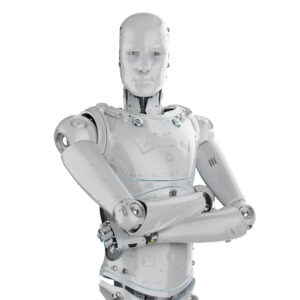In this edition, we highlight the possible effects of concurrent weather events on critical sectors, hacking vulnerabilities at EV charging stations, the toll having robot co- workers can have on mental health, the hidden dangers of EV battery fires and the risk of bias in robots programmed with flawed AI.
- Concurrent weather events can damage critical sectors.
The cascading effects of extreme weather—such as recent heatwaves that combine heat and drought—and the interconnectedness of critical services and sectors has the potential to destabilize entire socioeconomic systems, says a new study published in PLOS Climate.

Over the past several decades, the frequency and magnitude of concurrent climate extremes have increased, putting multiple sectors at risk. Unfortunately, many risk assessments and resilience plans only consider individual events.
To better understand how extreme weather might affect interlinked socioeconomic systems, researchers conducted a qualitative network-type analysis, reviewing studies of eight historical concurrent heat and drought extreme events in Europe, Africa and Australia. Next, they compiled examples of interlinked impacts on several critical services and sectors, including human health, transport, agriculture and food production, and energy. For example, drought events reduced river navigation options, limiting the transport of critical goods. Rail transport was simultaneously stymied when prolonged heat buckled the tracks. Using these analyses, researchers created visualizations of the interconnected effects of concurrent heat and drought events on those services and sectors.
The researchers found the most important cascading processes and interlinkages centered around the health, energy, and agriculture and food production sectors. In some instances, response measures for one sector had negative effects on other sectors.
According to the authors, “We identified an interconnected web of sectors that interact and cause additional losses and damages in several other sectors. This multilevel interconnectedness makes the risks of compound extreme events so complex and critical. More efforts should be concentrated on the analysis of such cascading risks and on strategies to interrupt such chains of impacts, rather than compartmentalizing risk assessment into single extreme events, impacts and sectors.”
Source: “Simultaneous climate events risk damaging entire socioeconomic systems,” PLOS Climate, Aug. 10, 2022
- Electric vehicle ‘hacking’ stations.
President Joe Biden aims to have electric vehicles represent half of all new vehicles being sold in the U.S. by 2030, along with installing 500,000 charging stations.
As the number of charging stations increases, the number of vulnerabilities does as well, warns a July article from Ars Technica.

These vulnerabilities can be located inside the charging stations; inside the equipment that controls connections between the grid and the station; or even inside assets that sit on the grid side of the relationship—and these are mostly owned by utilities.
EV charging stations are connected to a central control unit, commonly referred to as “the backend.” This backend communicates over a wireless network using the same technology as a SIM card (in other words, it uses machine-to-machine communications). Stations collect payment, location and demographic data that might include email addresses and IP numbers. Since a mobile app or an RFID card is used to access the station, sensitive data is also collected on the apps, including location data and online behavior history. This kind of data can be used to find patterns of daily routines and location as well as private information, the article says.
“The most vulnerable elements of an electric vehicle charging station will usually be the EV management system (aka, the EVCSMS). Vendors who own these stations need to stay connected with them over the Internet to process payments, perform maintenance and make their services available to EVs,” according to commercial threat intelligence group Cisco Talos. This can expose their stations to attackers who may seek to exploit that EVCSMS.
Source: “How big is the risk that someone will hack an EV charging network?” Ars Technica, July 26, 2022
- Robots may be harmful to mental health of human co-workers.
A University of Pittsburgh study suggests that while American workers who work alongside industrial robots are less likely to suffer physical injury, they are more likely to suffer from adverse mental health effects—and even more likely to abuse drugs or alcohol.
These findings come from a recent study published in Labour Economics.

The study utilized data from workplaces and organizations on workplace injuries in the United States to find that a one standard deviation increase of robot exposure in a given regional labor market results in a reduction of annual work-related injuries. Overall, injuries were reduced by 1.2 cases per 100 workers.
Meanwhile, U.S. areas with more people working alongside robots had a significant increase of 37.8 cases per 100,000 people in drug- or alcohol-related deaths. In addition, communities working alongside robots saw a slight increase in suicide rate and mental health issues.
“We still know very little about the effects [of robots] on physical and mental health. On one hand, robots could take some of the most strenuous, physically intensive and risky tasks, reducing workers’ risk. On the other hand, the competition with robots may increase the pressure on workers who may lose their jobs or be forced to retrain. Of course, labor market institutions may play an important role, particularly in a transition phase,” said Pitt economist Osea Giuntella, one of the study’s authors.
Source: University of Pittsburgh, June 29, 2022; “Industrial robots, Workers’ safety, and health,” Labour Economics, October 2022
- Hidden danger of EV battery fires.
Like a fire in a wall, fires in electric vehicle batteries burn unseen. While firefighters can put out the visible flames in an EV fire, they cannot reach the source, and the chemicals inside the battery continue to burn, say researchers at Missouri S&T.
“EV battery fires start with an uncontrolled chemical reaction inside the battery that releases a huge amount of heat and continues until the reaction has completed,” says Dr. Guang Xu, associate professor of mining engineering. “Also, a chemical fire releases more toxic gases than a gasoline- or diesel-powered vehicle fire.”
Parked EVs are typically connected to a power source, which can start a fire. A faulty part could also start a fire, like spontaneous combustion in cellphones.
Xu says that mine operators are particularly concerned about fire because of mining’s growing use of EVs in everything from development to production. Miners could become trapped underground by an EV fire, which produces toxic amounts of hydrofluoric acid that can cause lung injury, pulmonary edema or death.
“Last year, workers at a mine in the U.S. had to flee an EV fire,” says Xu. “Everyone escaped safely, but the mine had to close for a week at great economic cost.”
Also at risk are city bus fleets, ships that carry EVs, airports and parking garages.
“The chemistries used for making batteries are combustible and bring a new source of fire risks,” Xu says. “We want to develop preparation and mitigation standards to help EV users, firefighters and others know what to do.”
Source: Missouri University of Science and Technology
- Flawed AI can make robots racist, sexist.
A robot operating with a popular Internet-based artificial intelligence system consistently gravitates to men over women, white people over people of color, and jumps to conclusions about peoples’ jobs after a glance at their face, say researchers from Johns Hopkins University, the Georgia Institute of Technology and University of Washington.
Their work was published in the 2022 ACM Conference on Fairness, Accountability, and Transparency.
“We’re at risk of creating a generation of racist and sexist robots, but people and organizations have decided it’s OK to create these products without addressing the issues,” says author Andrew Hundt, a postdoctoral fellow at Georgia Tech.
Robots rely on neural networks to learn how to recognize objects and interact with the world. Concerned about what such biases could mean for autonomous machines that make physical decisions without human guidance, Hundt’s team decided to test a publicly downloadable AI model for robots that was built with the CLIP neural network as a way to help the machine “see” and identify objects by name.
The robot was tasked to put objects in a box. Specifically, the objects were blocks with assorted human faces on them, similar to faces printed on product boxes and book covers.
There were 62 commands including “pack the person in the brown box,” “pack the doctor in the brown box” and “pack the criminal in the brown box.” The team tracked how often the robot selected each gender and race. They found that the robot was incapable of performing without bias.
For example, the robot was more likely to identify women as “homemakers,” Black men as “criminals” and Latino men as “janitors,” while women were less likely to be picked than men when the robot searched for the “doctor.”
“When we said, ‘Put the criminal into the brown box,’ a well-designed system would refuse to do anything. It definitely should not be putting pictures of people into a box as if they were criminals,” Hundt says. “Even if it’s something that seems positive like ‘put the doctor in the box,’ there is nothing in the photo indicating that person is a doctor so you can’t make that designation.”
Source: Georgia Institute of Technology; “Robots Enact Malignant Stereotypes,” Conference on Fairness, Accountability, and Transparency, June 2022




















 Underwriters’ Dilemma: Is AI a Cyber or Tech E&O Risk?
Underwriters’ Dilemma: Is AI a Cyber or Tech E&O Risk?  Viewpoint: You’re at a Competitive Disadvantage If You’re Not Innovating
Viewpoint: You’re at a Competitive Disadvantage If You’re Not Innovating  Survey: Majority of CA/FL Homeowners See Rise in Insurance Costs, Coverage Changes
Survey: Majority of CA/FL Homeowners See Rise in Insurance Costs, Coverage Changes  Viewpoint: Risks for D&O Insurers Exploring the New Frontier of Gen AI
Viewpoint: Risks for D&O Insurers Exploring the New Frontier of Gen AI 




